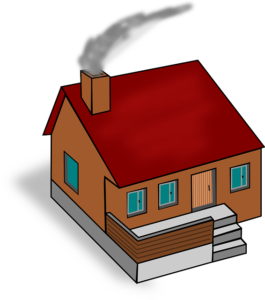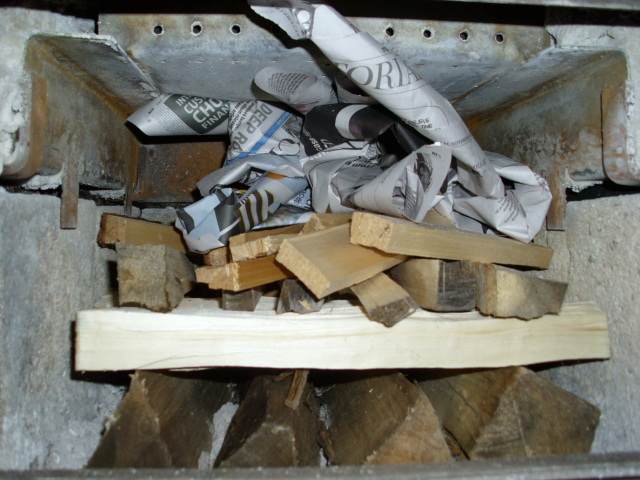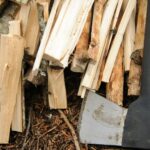How To Start a Fire in a Wood Stove

There is nothing more satisfying and cozy than building a fire in your wood burning stove on a cold day. In order to enjoy your Hallmark moment without filling the inside of your house or cabin with smoke, you should know a few simple things about how to start a fire in a wood stove so you can enjoy the timeless beauty of heating with fire.
Simple, but not necessarily easy
It’s wishful thinking to believe that starting a fire in a wood stove is as simple as setting the thermostat to 88 and walking away. After all, you just open the wood stove, load it full of wood, throw in a match, and close the door, right? Well, if that works for you, then you’ve got extremely dry firewood and (and you’re at risk of over-firing your stove). But in the real world, these are the things to keep in mind if you want a fire that starts quickly, is smoke-free, and burns long and hot.
I’ve found that rushing the process of starting a fire in the wood stove nearly always results in taking more time to get the fire going. So follow these simple steps, and you’ll be pulling off your sweater and kicking off the slippers in no time.
Materials needed to start a fire in a wood burning stove
To get a nice hot fire burning quickly, and with as little smoke as possible, you need to be prepared with the following items at hand:
- Tinder (or Paper). More that just a dating app, tinder is actually any dry, easily flammable material used to start a fire. It could be cedar strips or wood shavings, but old newspaper is most common. Be sure you avoid using newspaper with colored ink, or flyers made with glossy paper. In a pinch you can also use computer paper or toilet paper
- Kindling (Small, dry sticks to catch fire from the tinder). Fatwood is my recommended option , and yes it is safe to use in an EPA rated wood stove. Check out my article on kindling hatchets for more info
- Firewood seasoned and split to size.
- Air flow
Basic Physics
Before you get that fire going, you need to know the basic physics of a wood stove (and combustion in general). You might have heard a mechanic say an engine needs three things to run: air, fuel, and spark. Well, your wood stove needs the same elements available in order to successfully start a fire burning.
You need to identify where air enters the firebox. If your stove has a glass door, there should be a narrow strip above and behind the glass. This allows air to flow down across the glass to the front of the fire where it’s cooler and denser than combustion gases. If your stove doesn’t have a glass window on the door, there should be an air inlet somewhere near the bottom of the firebox. The old-style box stoves usually have a lever you can use to open and get airflow into the firebox.
Air Flow & Establishing a Draft
Let’s take some time looking at the issue of air flow. A common cause of smoke filling a room where a wood stove is located is a cold backdraft. This occurs when cold air from outside is drawn down your chimney, into your stove, and into your house. In other words: the air is moving the wrong direction. If you stick your hand into your stove and feel cold air flow before lighting the match, you’re likely to get a backdraft situation, and a room filled with smoke.

The easy fix for this is to open the nearest window or door to the frigid outside until you get your fire going. This is a simple case of air pressure. Like any fluid, air will naturally flow from areas of high pressure to low pressure. By adding more available air to the inside of your house, it will help the hot air from burning tinder overcome the cold backdraft and establish a positive draft.
Most people seriously underestimate the airflow needs associated with getting a wood stove burning. In some houses (especially new construction homes with very little draftiness) it’s nearly impossible to get a cold stove drawing air up the chimney unless you’ve got a nearby window or door cracked open to supply air.
Now that you know how to avoid a backdraft, it’s time to get on with building a fire in a wood stove quickly, and without smoke coming inside the house.
The best way to start a fire in a wood stove
Now that we’ve covered what you need, and how a wood stove works, I’ll share my favorite method for starting a wood burning stove. I’ve tinkered with many different methods and variations over the years, but I have to give credit to JG over at woodheat.org for this method. Before discovering this way of starting a fire in my wood burning stove, I used to fiddle with the log cabin method, the tee-pee method, and other random configurations.
This method I’m about to describe is damn reliable, and after you spend the 2 minutes placing your materials in the stove, you can basically drop a match and walk away. No more sitting beside the fire, crumpling up newspaper balls and throwing them in while you blow, curse, and end up with ash all over your face. (Or instead of blowing into a smokey pit of fire and ash, you could just buy a wood stove bellows and make your life much easier…)
The best way to start a wood stove: The Top Down Method

- Place normal sized firewood logs for the bottom row on the firebox. They should be well seasoned with a low moisture content below 10%
- Place medium-sized kindling atop the base row of logs. Lay these large kindling pieces perpendicular to the base row
- Lay down 6-10 pieces of small kindling on top of the larger kindling – again, perpendicular to the previous layer.
- The last step is to place tinder or those pieces of newspaper and crumple and twist them, laying them on the very top. I also like to place a few pieces of paper in the space between the bottom row of firewood and the next row of large kindling.
Light the paper and watch as the fire catches the top row of small kindling, and then moves down each layer you created, until the seasoned full-size firewood logs are burning well and hot. The reason I like this method is that you really just have to set it up once, and it’s good to burn for a few hours before you need to add more wood. If you start with a small tee-pee or log cabin, you have to monitor the initial burn closely, and slowly add pieces of full-size firewood as the fire progresses. This method bypasses that process. And when you’re in the business of burning firewood to keep warm, every efficiency counts.
Thoughts on newspaper: crumple, roll, or twist?
Here’s the best way I’ve found to use newspaper to start a fire in the wood stove. The trick is to loosely crumple or the paper — the finer the mass of paper, the quicker it lights. If you mash it into a tight ball or a tight rolled-up snake, it’s not going to burn quickly. So follow this method for the best results.
Take a few sheets of paper and loosely roll them from one corner to the opposite corner. Tie a lazy knot in each strip– this stops the paper from rolling around once you light it.
This method will provide you with a long and steady fire with minimal smoke, if any. When the weather is frigid out, you are going to want to sit back next to a warm fire in your home or cabin. Now that you know how to do just that, you can get started on your cozy fire right away.
What’s your preferred method of starting a fire in your wood stove? Leave a note in the comments below.
If you liked this article, check out my review of the best splitting mauls on the market.

